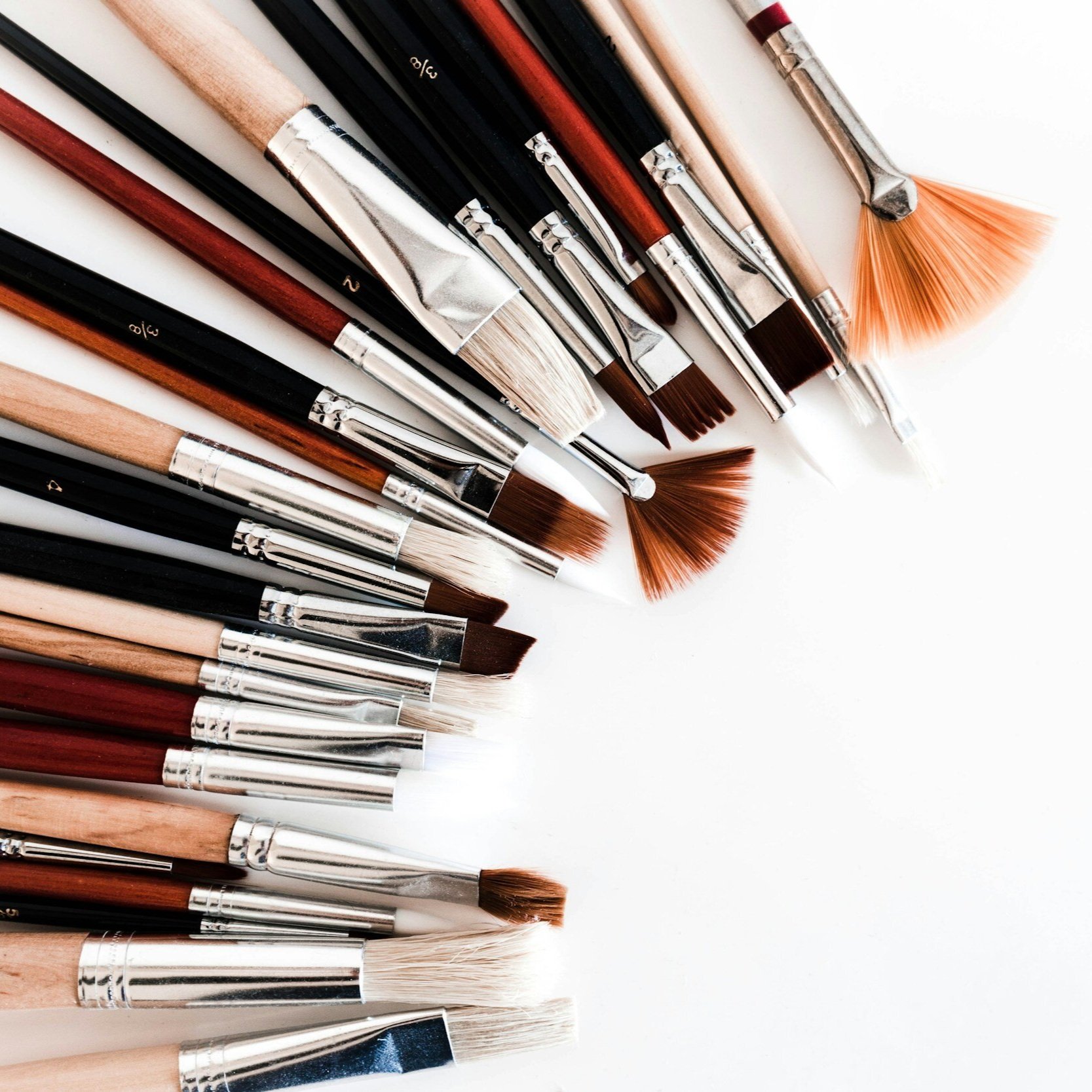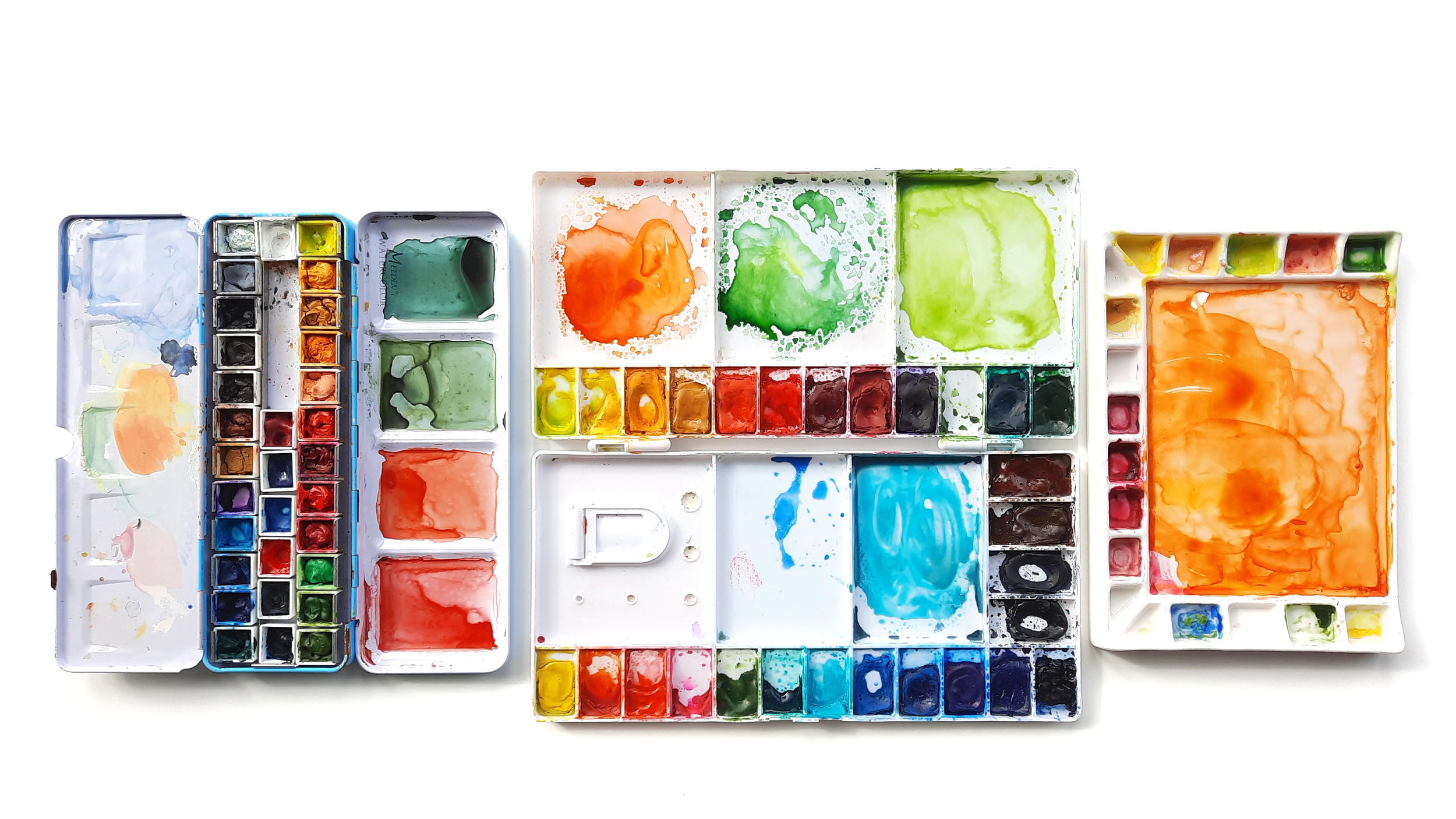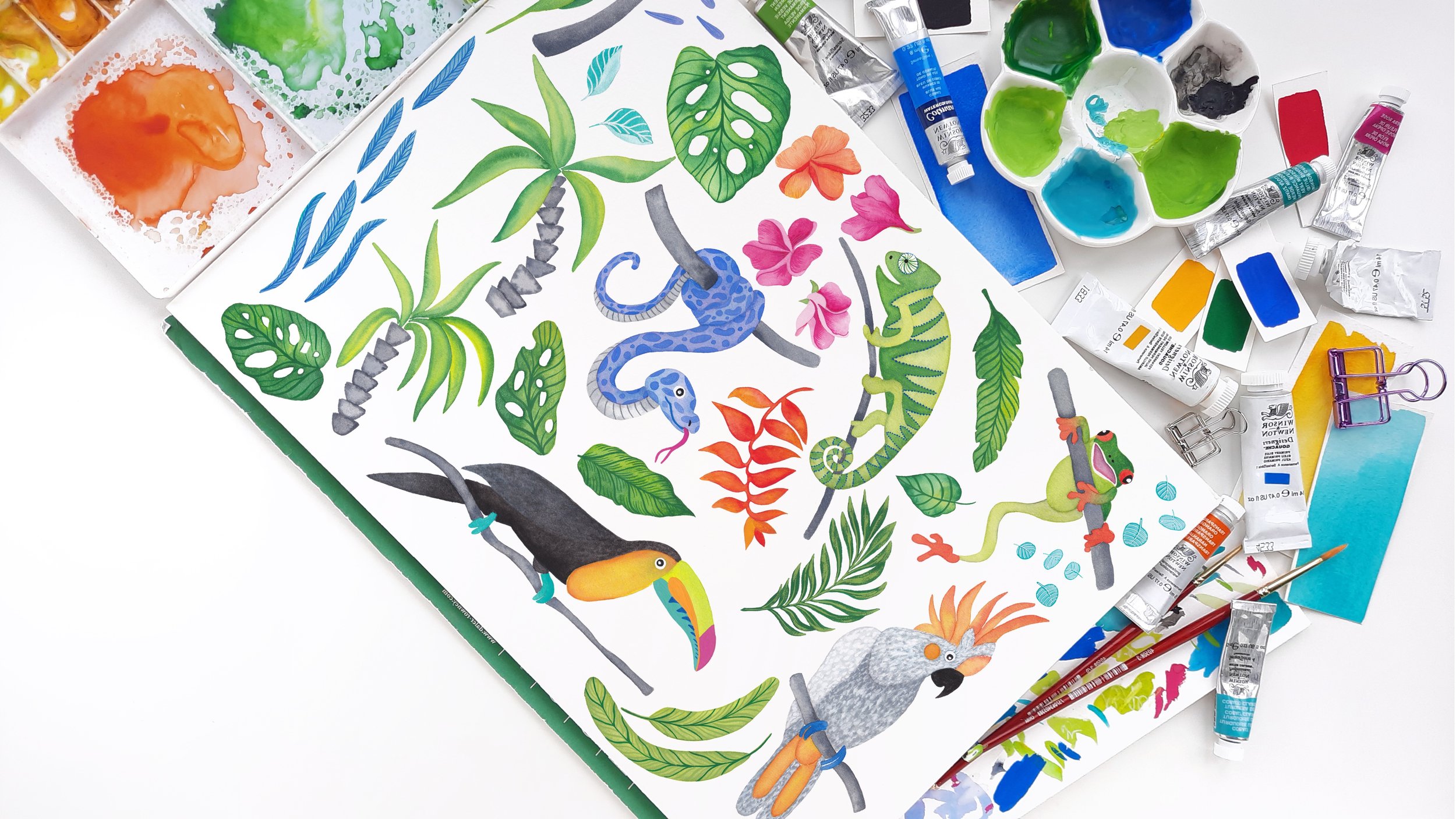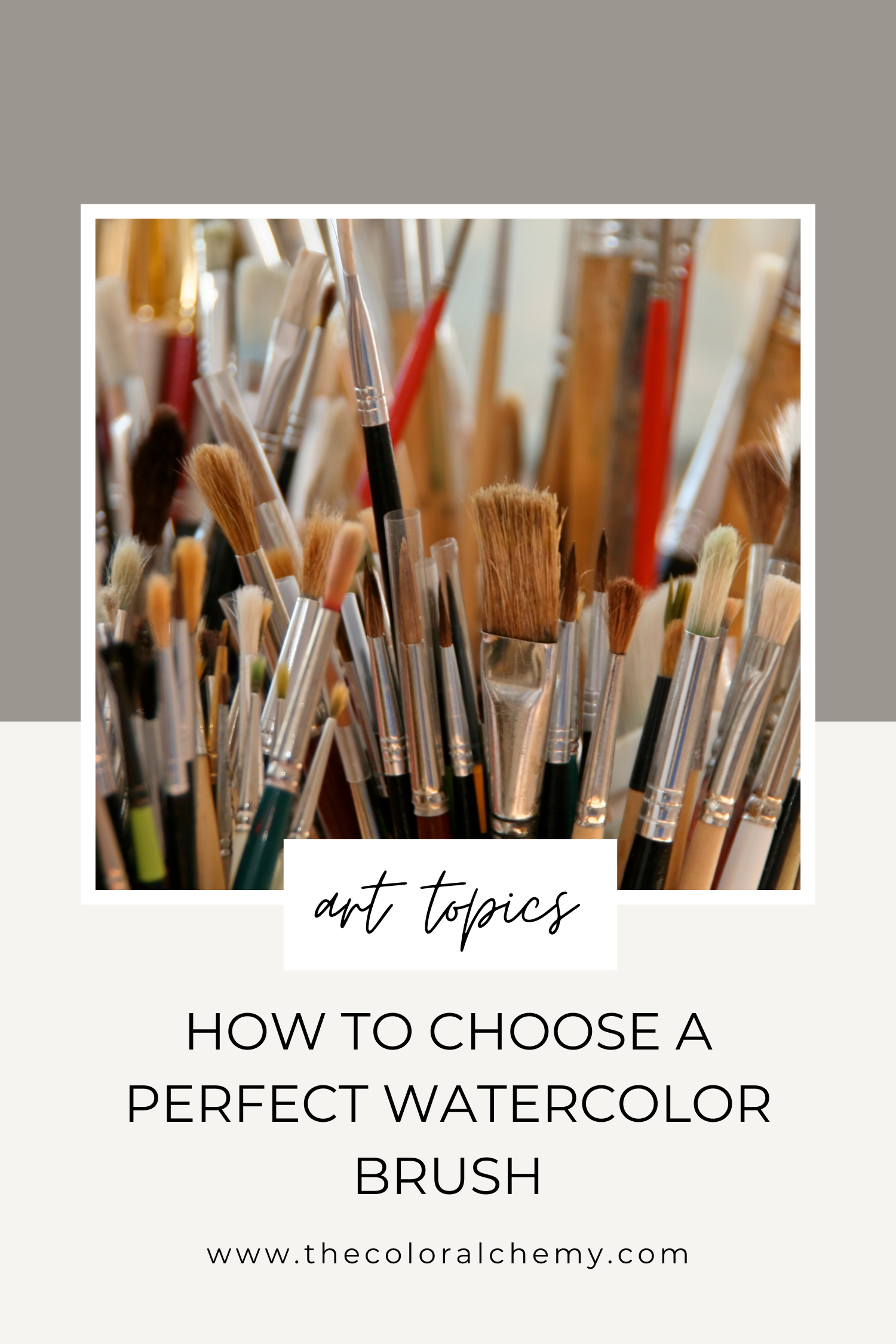(UN)NECESSARY Watercolor Supplies
Diving into watercolor painting? Great choice! As a beginner, it's essential to focus on the basics and keep things simple so you can dip into painting with confidence and joy. But what about the endless range of possibilities when it comes to watercolor supplies? Overwhelming, right? Well, let me tell you right from the start what you won't need to start painting despite someone trying to suggest you otherwise.
1) High-quality watercolors, aka Professional paints
As you may already know, there are essentially two types of watercolor paints: student-level and professional-level. Their differences lie primarily in their quality, performance, and price. High-quality paints offer richer, more vibrant colours and a wide selection of unique shades.
As tempting as it sounds, you don't need any of these. As a beginner, you should start with a few primary colours, and if you want to treat yourself, get one tube of a professional shade that is not available in the student-level range. Believe me when I say that you wouldn’t be able to distinguish between professional-level Sap Green and student-level Sap Gree (considering that they are from the same manufacturer).
Recommended student-level watercolors
paint sets
Winsor & Newton Cotman Watercolour Tube Set of 12 8ml
Winsor & Newton Cotman Watercolour 'Sketchers Pocket Set' 12 x Half Pans
single tubes/pans
Winsor & Newton Cotman Watercolour:
Lemon Yellow HUE, Cadmium Red Pale HUE, Alizarin Crimson Hue, Ultramarine, Intense Blue, Viridian HUE, Sap Green, Burnt Umber, Yellow Ochre, Ivory black
2) Extensive Brush Collection
It's tempting to stock up on a wide collection of brushes with various shapes and sizes, but the truth is you can achieve remarkable results with just a few versatile brushes. When choosing watercolor brushes, artists usually consider factors such as shape, size, bristle material, softness, water-holding capacity, and handle length. Natural hair brushes offer better control, while synthetic brushes are more affordable. Soft brushes are ideal for washes and blending, while stiffer brushes create texture. Invest in a round brush with fine point for details and fine lines, a flat brush for washes and broad strokes, and a mop brush for blending and softening edges. These three brushes will cover the majority of your painting needs as you develop your skills.
Some of my favourite brands are Winsor & Newton, Tintoretto, Princeton and Daler-Rowney.
3) 100% Cotton Paper
If this is not the first article about watercolor supplies you read, you have probably heard about 100% cotton paper. Cotton paper is considered superior due to its durability, strength, and ability to withstand multiple washes and layers without deteriorating. It also has better archival qualities and is less prone to yellowing over time compared to wood pulp paper.
However, it is not the ultimate best choice for every artist in every circumstance. There are many other factors you should think about when choosing the right paper for yourself.
Weight: Watercolor paper is available in various weights, typically measured in pounds or grams per square meter (gsm). Heavier weights, such as 140lb (300 gsm) or higher, are preferred as they resist buckling and warping when wet.
Texture: Watercolor paper comes in different textures, including rough, cold-pressed (textured), and hot-pressed (smooth). Rough paper has a pronounced texture, which is ideal for expressive or textured painting styles. Cold-pressed paper has a medium texture, suitable for most painting techniques. Hot-pressed paper has a smooth surface, perfect for detailed work and smooth washes.
Type of art: The most crucial aspect when choosing watercolor paper is what you plan to paint. Is it a detailed, realistic painting with many layers, loose style florals or soft washes as a base for further detail ink or pen drawing? A specific art requires a specific type of paper.
In my experience, 50% cotton paper does great, as do some student-grade papers. The key is to find the watercolor paper that will suit your current needs. Also, remember that rougher paper means more difficulty in water control and brush navigation. Smooth paper is not great for expressive painting with even transitions and bleeds.
My favourite (budget-friendly) brands are Pencilmarch and Daler-Rowney (The Langton)
PENCILMARCH 50% Watercolor Paper is great for loose style painting
4) Fancy Palettes
So you see all these beautiful, photogenic, fancy ceramic custom watercolor palettes all over social media, and you think you need one to call yourself an artist? Did you know that the price tag can go up to hundreds of pounds or dollars? In my humble opinion, not the best investment to start with.
Grab a simple ceramic plate or plastic palette and start mixing and diluting your paints. Start focusing on mastering color mixing and achieving the desired consistency of paint before investing in a fancier palette.
5) Advanced Tools and Accessories
As a beginner, it's easy to get caught up in the temptation of advanced tools and accessories marketed to watercolor artists. Let's name a few so you can come back to them later once you are comfortable with the basics.
Masking Fluid
Masking fluid is a liquid latex compound that forms a barrier on the paper, preserving areas you want to keep white or unpainted. While masking fluid can be a useful tool for creating intricate details or preserving highlights, it requires careful application and can be challenging to remove without damaging the paper.
Sponges
Sponges, both natural and synthetic, can be used to create various textures and effects in watercolor painting. They are particularly useful for softening edges, lifting paint, or adding subtle patterns to your artwork.
Granulation Medium
Granulation medium is a special additive that can be mixed with watercolor paint to create granular textures and effects. When mixed with certain pigments, the pigments separate and settle into distinct granules on the paper, creating interesting and unpredictable textures. Granulation medium can add depth and character to your paintings, but it requires experimentation to achieve the desired effects.
Texture Medium
Texture medium is similar to granulation medium but is designed to create more pronounced texture and relief on the paper. It contains particles or fibres that add tactile texture to the paint, allowing you to create raised or textured surfaces in your artwork. Texture medium can be used to simulate textures such as sand, stone, or fabric, adding dimension and visual interest to your paintings.
Watercolor Ground
Watercolor ground is a special primer that can be applied to non-traditional surfaces such as canvas, wood, or fabric to make them suitable for watercolor painting. It creates an absorbent surface that allows watercolour paint to adhere and spread smoothly, opening up new possibilities for experimentation and mixed-media artwork. Watercolor ground can be tinted or left transparent, depending on your desired effect.
In wrapping up, remember that in your watercolor journey, less is often more! It's easy to get caught up in the excitement of fancy tools and paints, but they often distract rather than serve. It's okay to keep things simple and focus on the basics. By sticking to essential supplies like brushes, paints, and paper, you'll have everything you need to start creating beautiful art. So, don't stress about what you don't have—embrace what you do, and let your creativity shine! After all, the most important ingredient in any masterpiece is you. Happy painting!
Pin this article for later ✔
NAVIGATE BY CATEGORY
AUTHOR
HI THERE, I'M PETRA! :)
Independent Surface Pattern Designer, Watercolor Enthusiast and Pattern Lover. The creative force behind THE COLOR ALCHEMY🌈🎨🙋🏻♀️








